WeTek Hub is the latest TV box by WeTek running Android 5.1 or OpenELEC, with support for Widewine Level 1 allowing Netflix HD in Android as well as Microsoft Playready DRM, and featuring Amlogic S905-H Rev. C processor that fixes video playback issues on some 4K H.265 DVB streams, and includes Dolby and DTS licenses. The company has now sent me a unit for review, and I’ll check the hardware first before reviewing the TV box in a separate post.
WeTek Hub Unboxing
The device comes in a blue and black retail package showing some of the key features including WiFi, Dolby, DTS, HDMI, and Bluetooth support.
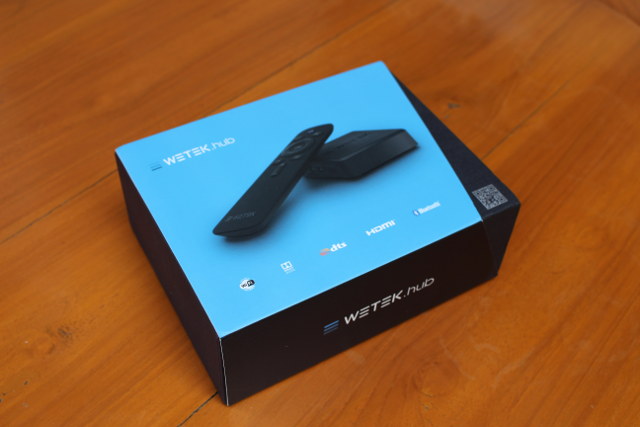 The QR Code on the package redirects to http://www.wetek.com/qr/201603, which just looks like WeTek main page. The top cover of the package can slide to reveal more small boxes with the device and accessories.
The QR Code on the package redirects to http://www.wetek.com/qr/201603, which just looks like WeTek main page. The top cover of the package can slide to reveal more small boxes with the device and accessories.
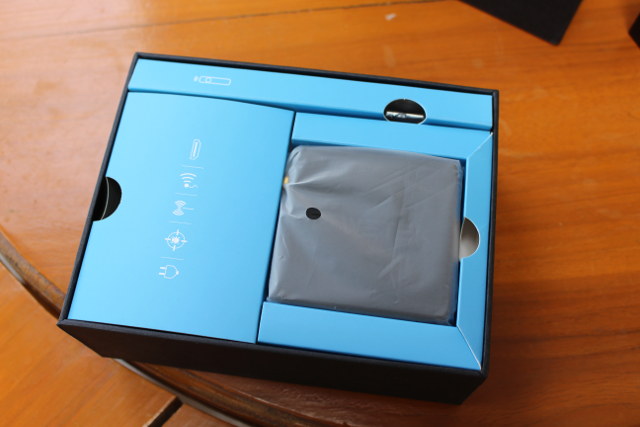
The device ships with a basic IR remote control taking two AAA batteries, a 5V/2A with US, UK, and EU plug adapters, an HDMI cable, an IR extension cable with 3M sticker, a 3.5mm jack to serial cable for developers or debugging your device, a WiFi antenna, as well as a user manual including an “emergency” clip to re-flash the firmware if needed.
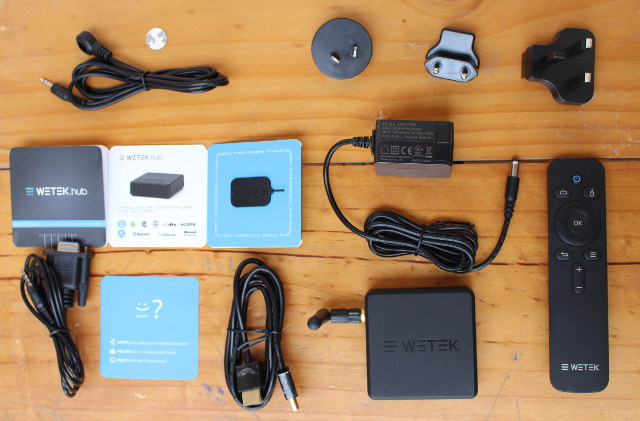
The tiny device has the antenna connector, micro SD slot, UART and IR extension hacks, as well as a USB port on one side, and the DC jack, Gigabit Ethernet and an HDMI 2.0 port on the rear.
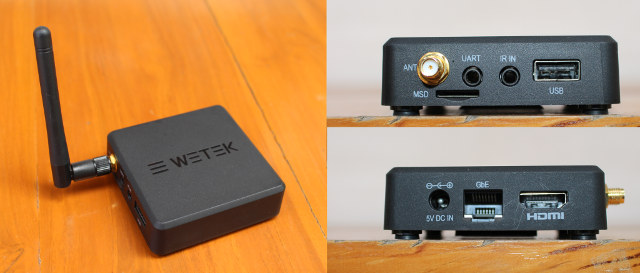
WeTek Hub is really a small device, and to show just how small it is I took a photo with a Raspberry Pi 2 board. The IR extension cable would also allow you to completely hide the device in your cabinet.
WeTek Hub Teardown
The bottom of the case has a sticker with a MAC Address starting with E8:18:63:50, which looks up to WeTek Electronics Ltd, as well as a hole giving access to a yellow button for firmware recovery, among plenty of smaller ventilation holes.
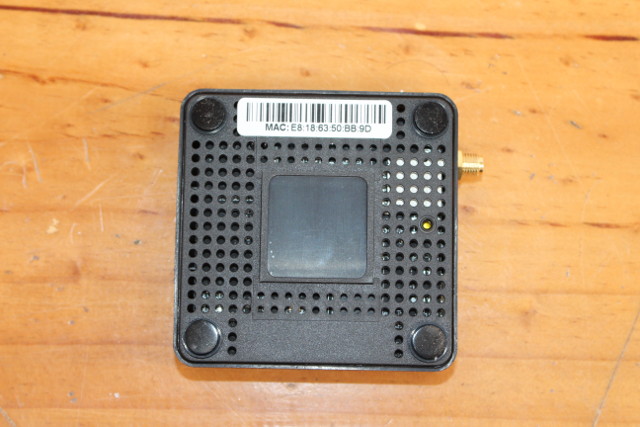
I had to take out the rubber feet, and loosen four screws to access the bottom of the board with the micro SD card slot, and a 8GB Samsung KLM8G1WEPD-B031 eMMC 5.0 flash with 130 MB/s read speed, 7 MB/s write speed, and 5000/600 random R/W IOPS.
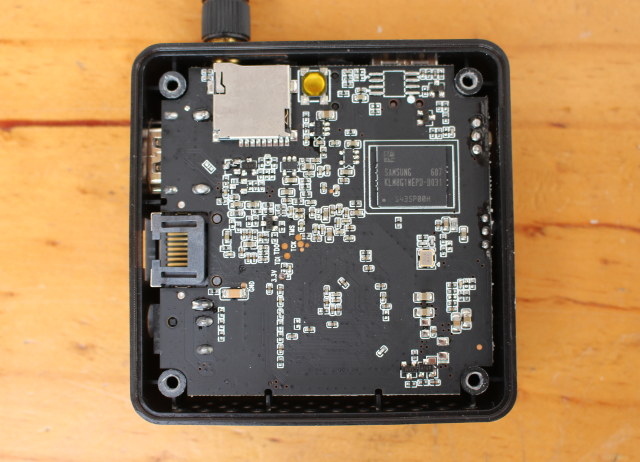
The board is then fairly easy to lift, and we can see the company used an heatsink with thermal paste on the Amlogic processor and two RAM chips (1GB in total), with the heatsink then in contact with a thermal pad glued to a metal plate on top of the case. Hopefully, this thermal design will be good enough to keep the performance at a good level even under high loads.
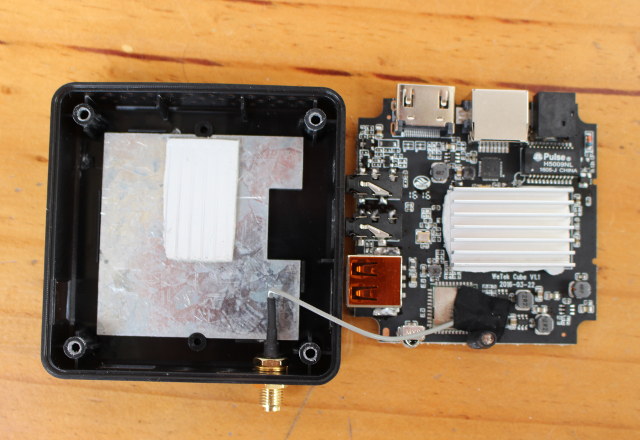
A close on the board shows AP6335 module has been used for 802.11ac WiFi (433 Mbps) and Bluetooth 4.0, and Realtek RTL8211F + Pulse H5009NL for Gigabit Ethernet.
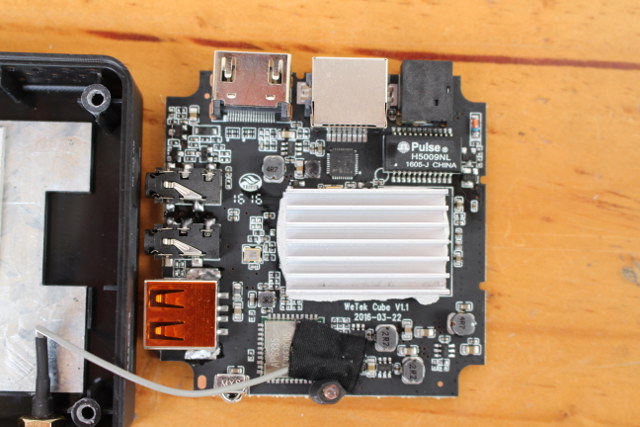
The board is called WeTek Cube V1.1, so maybe the company had the idea to launch a cube instead in the earlier stage of development, before deciding on a smaller form factor. You’ll also notice an IR receiver is soldered on the board, so you don’t have to use the IR extension cable if you don’t want to.
That’s all for today. The full review may take a while, as I have received several devices in a short time frame. WeTek Hub can be pre-ordered WeTek Hub, with shipping scheduled for July.

Jean-Luc started CNX Software in 2010 as a part-time endeavor, before quitting his job as a software engineering manager, and starting to write daily news, and reviews full time later in 2011.
Support CNX Software! Donate via cryptocurrencies, become a Patron on Patreon, or purchase goods on Amazon or Aliexpress


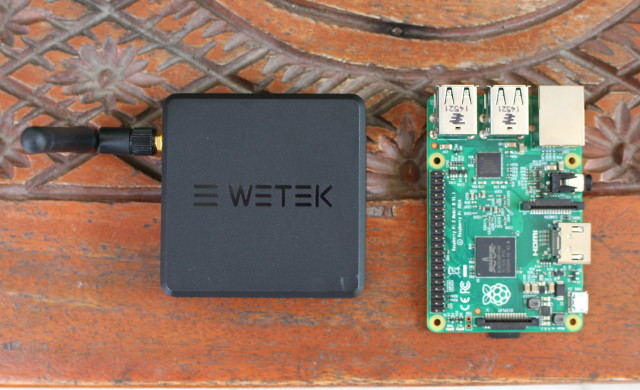



Is it right to assume that at this stage, all the Amlogic S905-H (and S905) chips in the market are Rev. C ?
@R0n
I guess it’s probably safe to assume the chips coming out of the fab are Rev.C, but there’s no guarantee all the Amlogic S905 TV boxes sold now have the latest processor.
What is the easiest way to test?
@Theguyuk
Not sure if there’s a quick way..
Normally, if I play the the Canal+ video @ http://www.cnx-software.com/2010/03/17/where-to-get-video-audio-and-image-samples/#comment-500940, it will freeze a short time on previous revisions, and it should play fine on Rev C. However, I’ve noticed the video also plays with MINIX XBMC even with an older Amlogic S905 processor. All others failed.Update: That one is due to a buffer issue, and is not fixed by the new processor (a software fix will do, which explains why it works on NEO U1). The Rev C. processor fixes a pixelation bug on some 4K DVB streams caused by C type frames.
Cheers ☺
I’m looking forward for the review!
I read a lot of great things about Wetek!
Depending on your review, i’ll buy or not one!
Any idea how the serial output works. I mean, is it output at TTL levels and there’s a level translation circuit in the cable or is it native RS-232?
@The Cageybee
On 1st WeTek device signal was converted internally to rs232 and also same cable was supplied so I’m pretty sure this is case here too.
@Stane1983
I was looking at the board near the serial output and thought it looked like a level translation circuit. Seems a strange way to do things.
as this supports openelec would libreelec also be supported?? as most people have swapped to that for a kodi experience.
@The Cageybee
Amlogic UART is TTL v3.3. Since WeTek decided to make it easy for developer or whoever to access serial console they internally convert TTL to RS232 and outputting it via attachable cable to standard DB9 RS232 female. At least that was case with WeTek Play.
@Stane1983
Thing is 9 pin RS-232 serial connectors aren’t as ubiquitous as they used to be. Many systems don’t come with one whereas every system has USB these days. The documentation even states that you need an RS-232 to USB converter in the prerequisites for debugging, although it’s obvious that it’s only needed if you don’t have an RS-232 port.
In any case, in that scenario you’re going from TTL > RS-232 > TTL > USB.
These days many people who like playing around with this sort of stuff will most likely already have an Arduino lying around that could do TTL to USB. It just seems to be over complicating things, adding cost to the board and most likely adding cost to the end user as well.
@The Cageybee
I agree that’s not the best option. I would have preferred a 3.5mm jack to USB. With WeTek play I used the provided cable with a RS232 to USB adapter.
Are you sure about the Widevine Level 1 support? WeTek doesn’t mention Widevine Level 1 in the specs on their website.
@HansHa
I’ve doubled checked with WeTek and they confirmed that Level 1 widevine and Microsoft Playready 2.5 are both supported on Wetel.hub
@dion
There is no official OpenELEC support for the WeTek Hub as it’s not possible to build OpenELEC for the WeTek Hub – the WeTek Hub has not been added as a build target in the OpenELEC git repository, and since there hasn’t been a new commit in over 3 months (as of 17 August 2016) it’s entirely possible the whole project is now dead.
The good news is that LibreELEC has replaced OpenELEC, and LibreELEC has full and official support for the WeTek Hub. Any abandoned OpenELEC users wishing to seamlessly upgrade to LibreELEC should be able to do so by dropping the latest LibreELEC tar file into their OpenELEC Update folder, and rebooting.
WeTek Cube is “V1.1” not “VL1” 😉